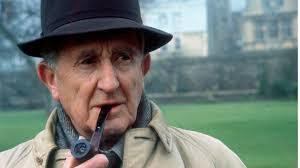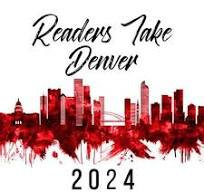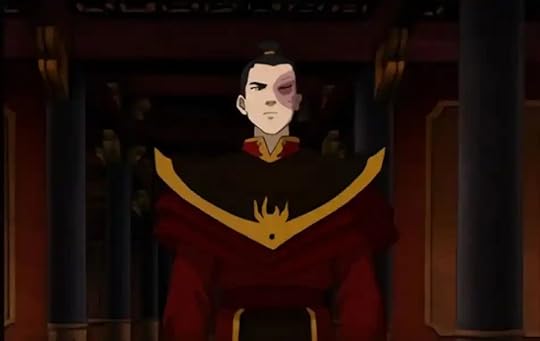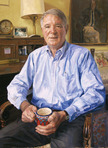William Peace's Blog, page 7
June 17, 2024
Review: Glimpses of the Devil
This is a book that I had been seeking for several years. I thought the title was “Hostage to the Devil” and I thought the author was Scott Peck. Looking on Amazon.co.uk, I wasn’t having any luck, but on Amazon.it, I had success on both searches. Under the author M. Scott Peck, M.D., I found Glimpses of the Devil, which is subtitled ‘A Psychiatrist’s Personal Accounts of Possession, Exorcism and Redemption’. I also found Hostage to the Devil whose author is Malachi Martin. Perhaps my search of the UK website was ineffective, or perhaps Italy being a Catholic country has a keener interest in exorcism. In any event, I bought both books, and I have finished reading Glimpses of the Devil.
The back cover of the book has this biography: “M. Scott Peck’s publishing history reflects his own evolution as a serious and widely acclaimed writer, thinker, psychiatrist, and spiritual guide. Since his groundbreaking bestseller, The Road Less Traveled, was first published in 1978, his insatiable intellectual curiosity has taken him in various new directions with virtually each new book: the subject of healing human evil in People of the Lie (1982), where he first briefly discussed exorcism and possession; the creative experience of community in The Different Drum (1987); the role of civility in personal relationships and society in A World Waiting to Be Born (1993); an examination of the complexities of life and the paradoxical nature of belief in Further Along the Road Less Traveled (1993); and an exploration of the medical, ethical, and spiritual issues of euthanasia in Denial of the Soul (1999); as well as a novel, a children’s book, and other works. A graduate of both Harvard University and Case Western Reserve, Dr. Peck served in the Army Medical Corps before maintaining a private practice in psychiatry.” Glimpses of the Devil was published in 2005. Dr Peck was born in 1936 and died in 2005.

M. Scott Peck
Glimpses of the Devil recounts two exorcisms actually performed by Dr Peck along with a team of religious leaders and volunteers. Both exorcisms were video recorded, and in writing the book, Dr Peck called on the recollections of the members of his team, the possessed person and members of her family.
Until Dr. Peck first met the young woman called Jersey, he did not believe in the devil. In fact, as a mature, highly experienced psychiatrist, he expected that this case would resolve his ongoing effort to prove to himself, as scientifically as possible, that there were absolutely no grounds for such beliefs. Twenty-seven-year-old Jersey was of average intelligence; a caring and devoted wife and mother to her husband and two young daughters, she had no history of mental illness.Yet what he discovered could not be explained away simply as madness or by any standard clinical diagnosis. Through a series of unanticipated events, Dr. Peck found himself thrust into the role of exorcist, and his desire to treat and help Jersey led him down a path of blurred boundaries between science and religion. Once there, he came face-to-face with deeply entrenched evil.
Dr Peck’s second exorcism was Beccah, in her mid-forties and with a superior intellect, who had suffered from profound depression throughout her life, choosing to remain in an abusive relationship with her husband, one dominated by distrust and greed. This exorcism, like Jersey’s took four days, but this one was not successful in that Beccah was repossessed. Dr Peck attributed her repossession to the length of her possession, which was thought to be about 40 years. Beccah went back to her fraudulent financial business and died of osteomyelitis or morphine addiction fifteen or twenty years later by which time, Dr Peck was no longer in touch with her.
Dr Peck breaks an exorcism down into stages of Presence, Pretense, Break Point, Voice, Clash and Expulsion, the same stages as mentioned by Malachi Martin on Hostage to the Devil. In Presence, the team becomes aware of a demonic presence in the room. The temperature seems to drop, there is no other outward sign, but everyone can feel it. In Pretence, the demon pretends to be the possessed person, using his/her voice to speak. At Break Point, the Pretense ends and the demon uses the possessed’s vocal chords to speak in its own Voice. Clash, as the word suggests, marks the crucial disagreement with the demon and can include the exorcist, the possessed and members of the team. Expulsion marks the exit of the demon, which happens because the possessed turns against the demon, because of demands made by the exorcist, or (the Catholic church believes) by the intervention of Jesus.
Glimpses of the Devil is not a work of fiction. It is rather scientific work by a nationally recognised doctor. Nor is it one man’s testimony. Videotapes of both exorcisms exist and Dr Peck identifies all of the people involved in each process, though for obvious reasons, they are anonymised. One feels that one is actually present at each exorcism, observing all of the details worth observing. The author does not speculate or draw unproven conclusions. His principle conclusions are that the devil is a real being who is a huge threat to individual human beings, and the devil is afraid of Jesus.
It is a very difficult book to put down!
June 9, 2024
Best Seller List
There is an article on the Literature News website, 10 March 2024, written by ‘Manish’ which confirms my long-held suspicions about the New York Times Best Seller List.

“When bestseller book lists are curated based on editorial whims rather than objective sales figures, the transparency and reliability of such rankings are compromised, leading to challenges for readers seeking genuine insights into popular literary tastes. In an ideal scenario, bestseller lists serve as valuable tools for readers to discover widely acclaimed books and gauge the preferences of their peers. However, when these lists are influenced by subjective judgments rather than concrete sales data, the distinction between truly popular books and those merely promoted or favoured by a select group of editors becomes blurred.
“This phenomenon undermines the credibility of bestseller lists and hampers readers’ ability to make informed decisions about their reading choices. Books that receive prominent placement on these lists due to editorial biases may garner unwarranted attention and overshadow lesser-known titles that may be more deserving of recognition based on their actual sales and reader reception. As a result, readers may miss out on discovering hidden gems that resonate with their interests and preferences.
“Now, let’s reveal the moot point of this article. In recent years, the New York Times Bestsellers List has come under scrutiny for its alleged editorial bias and lack of transparency. The controversy has sparked a heated debate within the publishing industry, with some authors and publishers questioning the list’s credibility and relevance. At the heart of the controversy is the claim that the New York Times Bestsellers List is not a true reflection of book sales but rather an editorial product subject to the editors’ preferences and biases. Critics argue that the list does not accurately represent the actual sales figures of their books, suggesting that the list is not a reliable indicator of a book’s popularity or success.
“In response to these claims, the New York Times maintains that the list is an editorial product and that they have the right to make decisions about which books to include and which to exclude. They argue that the list is not solely based on sales numbers but also takes into account other factors, such as the quality of the writing and the book’s overall impact.
“It’s absolutely ridiculous that the New York Times has the audacity to call their list a “Bestseller List” when it’s clearly nothing more than a biased, subjective, and editorial-driven selection of books. It’s a slap in the face to authors and readers alike, who expect a bestseller list to be based on actual sales numbers and merit, not the whims of a few editors. The fact that the NYT openly admits to considering their list an “editorial product” and claims the right to include or exclude books based on factors like “quality of writing” and “overall impact” is a complete joke. Who are they to decide what constitutes quality or impact? It’s nothing more than an elitist, self-serving attempt to control the narrative and push their own agenda. If the New York Times wants to maintain any credibility, it should stop masquerading its list as a “Bestseller List” and rename it something more accurate, like “NYT Editorial Subjective Choices.” It’s time for them to own up to their biased, subjective, and editorial-driven selection process and stop misleading readers with their so-called “Bestseller List.”
“Evidently, the controversy has led to calls for greater transparency in the selection process for the New York Times Bestsellers List. Some authors and publishers have demanded that the New York Times provide more information about the criteria used to select books for the list and the data sources used to compile it.
“The debate has also highlighted the role of other bestseller lists, such as those published by Amazon and other retailers. These lists are based on actual sales data and are seen by some as more objective and reliable indicators of a book’s popularity.
“In conclusion, the controversy surrounding the New York Times Bestsellers List is an ongoing debate that raises important questions about the role of editorial judgment in the selection of books for bestseller lists and the need for transparency in the selection process. As the debate continues, whether the New York Times will respond to the criticisms and change how it compiles its Bestsellers List remains to be seen.”
June 1, 2024
Review: The Hobbit
I had never read any J R R Tolkien, because I had the impression it is trendy, other worldly. But I decided that I had to give him a try when he made the One Hundred Best Writers’ list, and I bought a copy of The Hobbit, his first novel. I’m glad I did.

J R R Tolkien
The Tolkien Society says,”John Ronald Reuel Tolkien (1892–1973) was a major scholar of the English language, specialising in Old and Middle English. Twice Professor of Anglo-Saxon (Old English) at the University of Oxford, he also wrote a number of stories, including most famously The Hobbit (1937) and The Lord of the Rings (1954–1955), which are set in a pre-historic era in an invented version of our world which he called by the Middle English name of Middle-earth. This was peopled by Men (and women), Elves, Dwarves, Trolls, Orcs (or Goblins) and of course Hobbits. He has regularly been condemned by the Eng. Lit. establishment, with honourable exceptions, but loved by literally millions of readers worldwide”.
The Hobbit was written to entertain his children. Incidentally, Tolkien defined ‘hobbit’ as ‘little people, about half our height, and smaller than the bearded Dwarves…. There is little or no magic about them, except the ordinary everyday sort which helps them to disappear when large stupid folk like you and me come blundering along…. are inclined to be fat and have good-natured faces, and deep fruity laughs (especially after dinner).’ They also live in comfortable accommodation underground.
The Hobbit begins with Mr Bilbo Baggins, a hobbit, being called upon unexpectedly in his home by Gandalf, the magician, who invites him to go on a profitable adventure. Baggins declines, but the next day he finds himself serving tea to Gandalf and thirteen dwarves, who have a plan to kill a distant evil dragon and take his immense riches which had been stolen from the king of the dwarves and others. Gandalf identifies Baggins as the burglar of the group. They set off across dense forests, rivers and mountains, experiencing many exciting events, including attacks by wolves, giant spiders, hostile elves, goblins. During these adventures, Bilbo finds a magic ring which makes him invisible when he wears it. The ring is very useful as he sneaks into the dragon’s den and spots its fatal vulnerability. The dragon is killed by a human archer as it flies over a village setting fire to the thatched roofs with its flaming breath. A great war is fought over the dragon’s immense wealth between the goblins and wolves on one side and the dwarves, men, elves and eagles on the other. The latter prevail. Bilbo, having been given a chest of gold and another of silver for his services returns to his home in the company of Gandalf.
This is a thoroughly engaging and remarkable story. It is set a long time ago in an environment we would recognise: nothing strange about rivers, mountains, forest and lakes. We know about magicians, goblins, elves and dragons. and we know about dwarves, wolves, eagles and spiders, but perhaps not really giant spiders. The only new character is the hobbit, but his endearing character soon makes him our hero. The story is not fantasy and does not struggle with credibility. The principal characters, good and evil, each has his own quirky identity which builds his stature. The mishaps that befall the dwarves and hobbit are real, credible emergencies, and each is unique. The level of tension is constantly high. Even the narrator (Tolkien) does not remain anonymous. He comments, occasionally on the characters and their situations.
The Hobbit is a masterful piece of story telling!
May 26, 2024
Dealing with Adversity
On the Novelry website, Dr Stephany Carty has a post dated October 22, 2023 in which she, a psychologist and a novelist, talks about how to write characters’ responses to adversity that are interesting, credible and define the character by showing, rather than telling.
Dr Stephanie Carty is a published writer, as well as a Consultant Clinical Psychologist and NHS Head of Psychology in the UK. Her fiction has been shortlisted for many competitions, and her writers’ craft book, Inside Fictional Minds: Tips from Psychology for Creating Characters, has been an invaluable source of inspiration and education.

Dr Stephany Carty
Dr Carty says, “At some point in all of our novels, our characters – be they protagonists, villains, or even the person holding up the queue in the coffee shop – are going to have to deal with some sort of adversity. Adversity is what propels our characters to change, as they stand in the face of their demons, or are given the wrong Starbucks order.
And how our characters react to that adversity can tell our readers a whole lot about who they are as people. In fact, it’s a great tool for showing (and not telling) your reader, what your characters are truly like.
But how do you decide on their reaction? Where will it come from? And how can you be sure it’s psychologically sound?
Survival mode: characters dealing with adversityWhen we hurl difficult situations at our characters, they react in ways that match their history. Some will have picked up methods that focus on how to survive whereas others are able to thrive.
You can either work backwards from how you need your character to react, then figure out a backstory that matches; or you can take what you know about them already and discover their reaction by digging deeper into their survival mechanisms.
Decide on their worldviewIn their early years and beyond, what did your character learn about how safe other people are?
If they were mistreated, bullied, surrounded by anger or fear, then they learned from a young age that the world is a dangerous place and that other people are potentially harmful.
This leads them to developing hypervigilance for danger and learning which responses help them to survive: fight back, withdraw, be charming, feign illness, make allies with the aggressor, blame someone else, and so on.
These early strategies reoccur in times that are (or are perceived to be) threatening. Their focus under real or anticipated danger is to go into survival mode.
Now consider a different trajectory for your character: they were cherished and nurtured in childhood. They were allowed to take steps to independence safe in the knowledge there would be back-up if needed. They learned that the world is a relatively safe place, and that other people help you when things get tough.
So their response to a challenge as an adult is to trust in their capacity to cope, to seek help and to help others, to believe that there is a way forward which facilitates problem-solving. They have a potential to thrive in difficult circumstances.
As you can see, the worldview informs what behaviour occurs. These can differ widely according to what has been learned to be effective.
Distinguish the root causeWhat looks like the same behaviour on the surface could be either a sign of thriving or a sign of surviving.
Let’s take the example of a character who is cheerful at the harshest time, focusing their efforts on helping others.
This could be an example of thriving in someone who genuinely believes in themselves and that the future will be positive. However, it could also be a mask that has been learned as a survival strategy – that to act happy instead of scared and put other people first keeps them safe from the anger of others.
Your task is to show the reader the difference between the two by writing through the eyes of the character.
Choose some subtle signs of survivalYour reader can absorb clues about your character all the way through your novel without even realising. What little details could you choose to pay attention to that give more information than would appear at first glance?
Ideas for how you can ‘show’ a character’s survival pattern:Environment – if your character tends to be in survival mode, then in scenes from their point of view, use what seems like background description of a room or street to show the reader what is foremost in the character’s attention. For example, you could mention that the exit is to their left (without needing to state this is someone who automatically checks for an escape route due to being in high threat mode), or that the second streetlight is flickering as if it could switch off any moment (they are hypervigilant to threat outdoors as well as inside).Self-monitoring – show the focus that a character in survival mode may have on their own body. For example, someone who has learned to act passive in order to stay safe might sit on their hands or grip a chair to hide their anger; whilst a character who has been conditioned to act tough, and never show weakness to avoid being harmed, may be very aware if they are sweating or flushed.Appearance – has your character learned to keep themselves looking drab and folded over to avoid unwanted attention, or are they immaculately turned out in popular brand name clothes as a survival strategy of fitting in to avoid bullying? You don’t need to explain this or make it stand out too much, you can simply name drop a label or the particular shade of nail polish in mint condition for example.DifferentiateIt’s really important to remember that survival mode has developed in a certain set of circumstances. This means that survival responses differ for each character.
Let’s say you have a section of the novel where your three characters are reacting to a threatening note that has been delivered to their flat.
Milly is fearful of coming to harm, just like her mum who was attacked in her twenties. This triggers her to panic and want to leave the area.
Jamie is fearful of being seen to be scared. He was bullied at school and learned to mask his fear to avoid being beaten up – or worse. He makes jokes about the letter but inside is scared that he’ll not be able to protect his friends.
Daniella’s survival strategy means she doesn’t notice her fear and goes straight into anger. She learned in her teens that the only way to stop her dad from hurting her mum was to fight back. She grabs a knife and sits by the door, ready for action.
Outside of this clear threat, you could find that Milly often stays home and does a lot of her social life online, Jamie is focused on how he looks in public and lifts weights at the gym for hours on end, whereas Daniella goads people to test them out and prove she’s the most capable.
You want the small scenes to add up to the same picture as the behaviour found towards the main threat.
You can plan this out for your characters by answering the following statements for each:
My survival mode is triggered by… (type of threat)I keep myself safe by… (action)I get my needs met by… (action)A final point to remember is that your characters don’t have to fit neatly into one box or another. They may go into survival mode in some contexts and thrive in others, or you can have an arc that moves them out of threat mode across time.”
May 22, 2024
Review: Someone Else’s Shoes
My wife and I listened to this novel on the road from London to Sicily. At a length of 12 hours, 21 minutes, it entertained us for about half of our journey. It is written by Jojo Moyes and follows her formula: good women in trouble caused, at least partially by thoughtless men, plenty of action and emotion.

Jojo Moyes
Wikipedia says: ‘Pauline Sara Jo Moyes (born 4 August 1969), known professionally as Jojo Moyes, is an English journalist and, since 2002, an award-winning romance novelist, #1 New York Times best selling author and screenwriter. She is one of only a few authors to have twice won the Romantic Novel of the Year Award by the Romantic Novelists’ Association. Her works have been translated into twenty-eight languages and have sold over 40 million copies worldwide.’
There are two female protagonists in this novel. Sam Kemp works as sales manager for a printing company run by a despicable man who harasses her constantly for negligible failings. Her parents treat her like a handyman/servant; her husband has lost his job, his father died, and he is in a blue funk, watching TV all day. Nisha Cantor is the trophy wife of a super rich, totally selfish business man. She travels the world, staying in the best hotels, and her clothes are her identity, but she discovers that she is to be replaced by a younger trophy wife, and left without access to any money in London. Making it worse for her is that somebody has stolen her designer gym bag which held her six-inch high Christian Louboutin red crocodile shoes. Sam’s knock-off designer gym bag contains a pair of her comfortable flat shoes, but in her hurry to attend a meeting with a client, she picks the wrong gym bag. Left without her own shoes, Sam puts on the six-inch red crocks, and is amazed at the awe she strikes in workmates and clients. Her own confidence skyrockets. From that point, the story solves the following dilemmas with the help of hotel staff, Sam’s colleagues, her daughter, and a friend:
Should Sam resurrect a dead relationship with her husband, or go for the juicy colleague at work?Is Sam going to be fired, and if so, who’s going to hire her?How can Nisha get her shoes, her clothes from the hotel, some money, a decent settlement from her husband and a new love interest?The women answer these questions with great skill and ingenuity. They also manage to extract revenge from the uncaring husband and boss.
The theme ‘Someone Else’s Shoes’ is played out very well in the circumstances and characters of Sam and Misha, different as they are. The conclusion, where Sam and Misha work together, and respect each other fits nicely. But Jojo isn’t a moralizer, she’s in it for the tension, the dilemmas, and the high-tension emotion, where she really excels. Her particular skill is creating characters who are unique, credible and very real bundles of emotion. OK, some of the props (the shoes, for example) and the settings stretch reality a little bit, but who cares. We’re in this with Jojo for the fun, and there’s plenty of it!
May 14, 2024
Book Fair Disaster
In last Monday’s Daily Telegraph, there is an article by David Millward about a rather unpleasant book fair in the States.

“A four-day event that was supposed to be a bookworm’s dream has been dubbed the ‘Fyre Festival of Books’ after it descended into chaos and left one person with a black eye.
Led by Rebecca Yarros, a best-selling author, the Readers Take Denver festival at the Gaylord Rockies Resort and Convention Centre was billed as the ultimate event for book lovers.
However, as the day unfolded, the event fell apart, leading one disillusioned visitor to compare it to Fyre, the fraudulent 2017 music festival held on the Bahamian island of Great Exuma.
Attendees paid $300 to $375 (£239 to £299) for a ticket to an event where they were promised they could have books signed by best-selling authors who turned up in force to promote their writing. Many paid hundreds of dollars to travel to the event.
A timed ticketing system was supposed to ensure that readers had plenty of time to go from one booth to another to meet authors.
Instead, they spent hours queuing to have time with the writers, food ran out and pre-ordered books never arrived.
‘All we did was stand in line. It was worse than Disney, and there wasn’t even a ride at the end.’ Kelli Meyer, a self-described ‘RTD survivor’, told the Denver Post.
Security staff who were supposed to marshal the crowd failed to do so. One woman took to TikTok to describe how she sustained a black eye after being knocked over in a melee.
Another complained of being verbally abused by staff after she suffered a medical emergency. She claimed: ‘I was having a hypoglycaemic moment and was screamed at by staff to; ‘get the f—- up off the floor!’ She added: ‘there were so many horrific experiences between readers, vendors, authors, Pas, and volunteers alike. This was not just a breakdown in communication, it was a systematic issue with this program.’
Yarros, author of the best-sellers Fourth Wing and Iron Flame, vented her anger in a 2,436 word Facebook post apologising to guests who felt ‘frazzled’ and ‘overwhelmed’ by their experiences at the event. She wrote: ‘Readers, on behalf of every author at the event, I’m sorry. Sorry it was disorganised, sorry you did not get to bask in the overwhelming joy that spending three days in the book world should give you.’
Renee Jones, and event organiser, admitted the event suffered ‘bumpy bumps’. She said there had been ‘concerns’ about lack of security and unprofessional behaviour by volunteers.”
May 2, 2024
Review: Purpose
This is a non-fiction book by Samuel T Wilkinson with the sub-title: What Evolution and Human Nature Imply About the Meaning of Our Existence. The leading blurb on the back cover says, “If you struggle to reconcile faith and reason, Sam Wilkinson’s profound book Purpose was written for you. You will be left with and understanding of the guiding forces behind human evolution and behaviour,” Arthur C Brooks, professor Harvard Kennedy School and Harvard Business School and #1 New York Times bestselling author.

Samuel T Wilkinson
Sam Wilkinson is an associate professor of psychiatry at Yale University, where he also as associate director of the Yale Depression Research Program. He received his MD from Johns Hopkins School of Medicine. His articles have been featured in the New York Times, the Washington Post, and the Wall Street Journal. He has been the recipient of many awards.
The book begins with a discussion of the ‘Scopes Monkey Trial’ in Tennessee in 1925. John Scopes, a twenty-four year old substitute teacher and football coach was charged with violation of the recently passed Butler Act, which made it a crime to teach any theory which contradicted the Bible. Scopes had taught evolution which claimed that human beings had evolved from apes (in contradiction of the Bible). Scopes, himself, had very little role in the trial. The key players were William Jennings Bryan, a three-time presidential candidate and outspoken apologist for religious fundamentalism, for the prosecution, and Clarence Darrow, the most prominent defense attorney in the US at the time, for the defense. During the trial, Darrow called Bryan as a witness, and that interrogation resulted in a painful and cruel renunciation of biblical literalism. The jury, however, accepted that Scopes was guilty and fined him $100. The Scopes Monkey Trial, says the author, epitomises the science vs religion debate.
Wilkinson next attacks the doctrine of randomness associated with the concept of evolution: that every change in the struggle for survival was accidental and random, without any guidance or control. If one believes that human beings are a random construction, what are we here for? If we are here for no reason, it suggests that there is no God. But the author shows that evolution was far from a random process. That, for example, very different species have developed the same eye technology in entirely different environments at different times. The same point can be made about wings and lungs. The evolution of bacteria can be predicted.
Wilkinson then turns to the various selection processes that determine which variant is the one most likely to survive: is it done on an individual basis, amongst kin, or groups or at multiple levels. Selection can take place at different levels depending on the context, with very different results. Based on theses observations, it is not difficult to see that given the same starting point and the same inputs, living things would evolve exactly as they did if the process were to start over.
Wilkinson points out that human beings have two different sets of behaviours: kind, gentile, thoughtful, cooperative and forgiving vs. selfish, aggressive, emotive, combative and irrational. These two sets of behaviour have evolved consistently with us and are present in each of us to some extent. It is noted that even the ‘negative set’ have survival benefits in some circumstances. Wilkinson presents evidence that as human beings we are happiest when we have good relationships with others. On this basis, the author argues that life is meant as a test for us: how can we use our skills to maximise our good relations with others? He says there is certainly space to believe in a God who has given us free will and the opportunity to use our lives to benefit others.
Wilkinson presents well thought out arguments very clearly with a host of factual data. One cannot say he is wrong. He admits to a belief in God, but his belief is not part of his argument. He leaves it to the reader to draw her own conclusions, but don’t miss this read!
April 27, 2024
The Redemption Arc
There is a post on the Reedsy Blog dated 12 April 2024 which can be informative to those of us who write. I quote from it below:
“A redemption arc is when a previously morally gray (or even downright evil) character turns over a new leaf. But what, exactly, does this redemption look like?
Something to keep in mind is that one good deed does not make a redemption arc. The character you’re trying to redeem needs to develop some maturity, not just act positively once after a lifetime of villainy. Readers want to see someone grappling with their past and ultimately coming to terms with it through reflection and intentional behaviour as opposed to a quick and sudden change — in other words, it has to feel realistic.
As a character recognizes the flaws in their past actions, their arc typically culminates in a pivotal redemptive moment where they selflessly sacrifice their desires — or sometimes even their life — for the greater good or for others. Importantly, this gesture must be significant enough to convincingly atone for all their past misdeeds.
Audiences are drawn to these kinds of stories because we, as humans, are flawed and make mistakes. Seeing characters move past their misdeeds, make amends, and be forgiven by others gives us hope that we too can be offered that same grace.
To get an idea of what that looks like, and to understand the power a redemptive arc can have for a character, let’s look at three popular examples.
Ebenezer Scrooge in A Christmas CarolEbenezer Scrooge’s story is a classic example of a redemption arc. From the moment we meet him on a bleak Christmas Eve, we know he’s not a good guy. He’s callous with his overworked, underpaid employee and with the poor who come asking for donations.
 Michael Caine makes a pretty good Scrooge, right alongside some Muppets in A Muppets Christmas Carol. (Source: Walt Disney Pictures)
Michael Caine makes a pretty good Scrooge, right alongside some Muppets in A Muppets Christmas Carol. (Source: Walt Disney Pictures)While his solitary, penny-pinching ways make his life — and the lives of those around him — miserable, he doesn’t seem like he’s going to change. That is, until the appearance of some ghosts, and a little bit of time travel, challenge Scrooge to re-examine his ways.
The ghost of his old business partner, Marley, and the Ghosts of Christmas Past, Present, and Future force Scrooge to re-examine his life. They remind him of the better man he used to be, what he’s missing out on now, and the way his life will end if he continues on his current path. Deeply affected by what he’s seen, Scrooge vows to change his ways.
Once he returns to waking life, he immediately donates a huge sum of money to the previously-rejected charity, raises his employee’s pay, and goes to his nephew’s Christmas party. Scrooge even becomes a father figure to Bob Cratchit’s sickly son, further cementing his new commitment to doing good.
Zuko in Avatar: The Last AirbenderAfter being exiled from the Fire Nation by his cruel and demanding father, Prince Zuko has only one goal: capture the Avatar in order to regain his honour. The audience is first introduced to him as he does everything in his power to apprehend the main character, Aang. In other words, he starts the series as a fairly typical antagonist: hard, spiteful, and constantly doing whatever he can to stop the good Aang is trying to do.
But as we quickly learn, there’s far more to Zuko than meets the eye. He struggles with the expectations placed upon him by his father, a man who permanently scarred him (both physically and emotionally) for daring to speak up, and then sent him on a fool’s errand to get him out of the way. Zuko isn’t always sure he’s doing the right thing and constantly struggles to balance his father’s expectations with what he wants for himself — which is to be seen and respected for his achievements, without necessarily doing wicked things.
 Prince Zuko eventually becomes Fire Lord Zuko, earning his redemption and restoring his honor. (Source: Nickelodeon)
Prince Zuko eventually becomes Fire Lord Zuko, earning his redemption and restoring his honor. (Source: Nickelodeon)Eventually, he is allowed to return to the Fire Nation with his honour restored, with the Avatar supposedly dead because of him. But his doubts never go away and he remains uncertain of his decision to “kill” Aang and return home.
When he learns of his father’s plan to burn the Earth Kingdom to the ground, and of his own connection to the Avatar before Aang, Zuko decides he’s had enough. He confronts his father about his abusive treatment and imperialistic plans and declares his intentions to teach Aang firebending so the Avatar can stop him once and for all. Zuko sacrifices the one thing he’s always wanted, his father’s approval, in the name of the greater good — and, in the end, proves himself to be an honourable man.
Boromir in The Lord of the RingsOn the surface, Boromir doesn’t seem like the kind of character who would need a redemption arc. A noble son of the kingdom of Gondor, he joins the Fellowship in their quest to destroy the One Ring with only the best intentions.
However, even he isn’t immune to the Ring’s corruptive powers, and as they continue on their journey, he becomes more and more aggressive in trying to convince Frodo to hand over the Ring to him so he can use it to defeat Sauron once and for all.
 No one is immune to the temptation of the Ring, not even Boromir. (Source: New Line Cinema)
No one is immune to the temptation of the Ring, not even Boromir. (Source: New Line Cinema)This comes to a head when Boromir attacks Frodo in the hopes of gaining the Ring. He doesn’t succeed, but this does break Frodo’s trust in the Fellowship and ultimately causes him to run away to complete the quest on his own. Boromir is consumed by guilt and, though unable to admit to his part in Frodo’s flight, he helps the rest of the hobbits search for them and fights to protect them from orcs — though he ultimately fails. However, he then manages to alert the rest of the company to the hobbits capture and admits how he failed Frodo with his dying breath.
Boromir recognizes where he went wrong, and though he can’t make it up to Frodo, he proves himself a decent man in the end by defending his friends and giving the remaining members of the Fellowship a chance to save themselves.
There’s no one correct way to craft a redemption arc. Every character is different and so is their journey. But there are some key elements you should include to successfully convince your reader of a character’s change of heart.
4 tips to write a redemption arc
1. Show them at their worstFirst impressions make or break character. If you want the reader to root for them, you typically paint them in a good light from the start, perhaps by having them be generous to strangers or kind to children.
But when your character is in need of redemption, they likely won’t start off in such a good place. In fact, you want to show how terribly they’re doing, the evil deeds they’re committing, the way they’re being callous or pushing others too hard.
For example, when we first meet Prince Zuko, he’s clearly positioned as the antagonist. He’s hunting Aang and attacks a defenseless village in an attempt to capture him, leaving a wake of destruction behind him as he goes.
Showing your character at at their worst provides a stark contrast and sets the foundation for their redemptive journey, making the reader ask 一 will they ever change? And if so, how?
2. Hint at why they are the way they areNobody exists in a vacuum, and past circumstances influence who a character is now. Perhaps the death of a loved one pushed them down a dark path, or the rejection of a parental figure altered the way they look at the world. Whatever it is, show the reader the motivation behind a character’s actions.
This is important no matter what kind of character you’re writing — whether villain, hero, anti-hero, or soon-to-be-redeemed villain — but it’s especially important when dealing with a character you want the reader to give a second chance.
When we can understand a character’s motivations, we’ll be more likely to see their redeeming qualities and want them to do better. It doesn’t excuse what they do, but it offers an explanation, which allows a reader to sympathize, or even empathize, with them.
3. Give them a moment of realizationAs your character moves along their journey, they’ll learn new things about themself, achieve new perspectives, and perhaps have their morals and ideals challenged. These many small moments and thoughts will chip away at a character’s set ways until eventually, it crescendos into a defining moment. This is when they finally see the error of their ways and choose to set out on a different path — if not towards outright good, then at least to something better.
4. Let them atone through sacrificeDemonstrating the character’s commitment to their new way of being is an essential aspect of the redemption arc. Actions speak louder than words, after all. To prove to both the audience and their companions how serious they are about changing, and to make up for their previous mistakes, a sacrifice will show their commitment.
Many classic redemption stories will have a character heroically lay down their life for a new cause. While this is the ultimate form of sacrifice, and can be an impactful way to conclude a character arc, it’s also become something of a cliché. As an alternative, consider what else your character might sacrifice. Perhaps it’s their wealth, a prestigious position, or even a relationship that they give up in the name of the greater good.
Whatever the sacrifice is, it should be big and important enough to your character that it would’ve been unthinkable for them to cast it aside when we first met them. With that, their redemption will be solidified and they will emerge a new person.”
April 20, 2024
Review: Origins
This book, by Lewis Dartnell and subtitled ‘How the Earth Shaped Human History’ caught my attention because it deals with the intersection of science, history and human evolution.
Lewis Dartnell is professor of science communication at the University of Westminster. He has won several awards for his science writing and contributes to the Guardian, The Times and New Scientist. He has also written for television and appeared on the BBC’s Horizon, Sky News, Wonders of the Universe, Stargazing Live and The Sky at Night.

Lewis Dartnell
This book is rich in its recounting of the history of humanity from its evolution in Africa to its spread across the land masses of the world. It then covers the development of the flora and fauna put to different uses by peoples in various parts of the world. This was our early agrarian existence. What we build with, from mud to marble is accounted for in a chapter which describes how these substances originated. Man entered the Iron Age with the smelting of iron ore, but there was also tin, copper, gold and more modern metals. We learn how these metals were formed, where they are found and why. Depending on the places where they settled, people became migrant herdsmen, settled farmers, or traders. The earth is a great ‘wind machine’ whose dependable winds are capable of carrying sailors to particular destinations of interest around the world. This led to exploration and the establishment of global trade. Finally, the discovery of coal and oil led to the industrial revolution, and we learn how these fuels were formed millions of years ago. Along this journey covering millions of years we discover why particular current facts were pre-ordained million of years ago. For example, one can trace the pockets of historic Democratic voting in regions of the American South, to the prevalence of large slave populations to cotton plantations, to particular soil which was left by an ancient receding sea. It is this kind of linkage of human culture and behaviour to geography which provides fascinating insights. Throughout the book there are references to the drifting and collisions of land masses, the resulting mountains and volcanoes, earth’s temperature changes, and the resulting lakes, seas and ice caps.
The book is well worth reading, even if one feels that one has a good sense of the geographic history of the world. It is the relating of the outcomes of that ancient history to specific present-day economic, political and cultural situations, with names, dates and places, which makes it so memorable and interesting.
April 10, 2024
Write for the Screen
Ryan G Van Cleave has an article on the Writer’s Digest website dated 6 April 2024 covering the techniques used by screenwriters to produce blockbuster movies. The same techniques apply when writing compelling fiction.
In addition to running the creative writing program at Ringling College of Art and Design, Ryan Van Cleave is Editor for Bushel & Peck Books and has authored 20+ books. As The Picture Book Whisperer, Ryan helps celebrities and high-profile clients write picture book and kidlit titles.

Ryan G Van Cleave
Ryan said, “As a writer, you’re not just a teller of tales. You’re a director, a cinematographer, a set designer, and an editor—all combined. Harnessing the cinematic techniques used by screenwriters can make your fiction zing off the page, pulling readers in with a vivid reality that they can “see,” “hear,” and “feel.”
Cue the Perspectives
Much like directors choosing the best angle for a shot, writers must find the perfect perspective for their story. Instead of settling for the predictable, stretch your creative wings and explore innovative viewpoints.
Create the Perfect Shot
Visuals in film serve as the language that brings the script to life, captivating the audience in the world the filmmakers have created. Similarly, in prose, the words you choose craft the images that populate the reader’s imagination. But how can you make those images as evocative as possible?
Start with the nuances—details that serve as the brushstrokes in the painting you’re creating. Whether it’s the sheen of sweat on a protagonist’s forehead, the ominous shadows on a villain’s face, or the dappling sunlight through a leafy canopy, these descriptions add depth to the story’s atmosphere.
Compare the standard description, “It was a stormy night,” with something more atmospheric like, “Lightning shattered the night, casting eerie silhouettes against the thundering rain-slicked cobblestones.” The latter not only sets the stage but also stimulates the reader’s senses, pulling them deeper into the narrative.
Daniel Knauf—creator of the HBO series Carnivàle and writer/producer for The Blacklist—points out that in contemporary screenplays, specific shots are rarely called due to a variety of reasons—primarily to allow the director to do his or her job. “Better to simply call out a telling detail, such as ‘John’s eyes flicker down to his attacker’s knife’ or ‘Janet twitches a smile,’ actions that can only be achieved with an extreme close-up. Likewise, a long or wide shot can be indicated as follows, ‘John stands alone on a desolate strand of sand at the edge of the Pacific.’”
Using Visual Cues
In film, visual cues such as color, depth, motion, and contrast are indispensable tools for eliciting specific emotional responses from the audience. For instance, a scene featuring a heated argument might employ sharp contrasts and rapid motions to intensify feelings of chaos or discomfort.
Can fiction writers do the same thing? “Absolutely,” says Knauf. “Imagine the character, their emotions within the context of the scene.” He offers the following examples to showcase this technique.
Version 1
Janet chuckled softly, the rim of a glass of Chardonnay resting on her lower lip. “Frankly, John’s a pain in the ass,” she said, “but I love him to pieces.”
Version 2
Janet held herself tightly, shrinking into the chair in the detective’s office as if attempting to will herself invisible. She took a nervous puff off her third Marlboro and said, “Frankly, John’s a pain in the ass. But I love him to pieces.”
The actions and settings of the character in the second version guide the reader’s emotions in a specific direction. This serves a similar purpose to visual cues in film—it sets the emotional tone of the scene. In essence, the setting and actions of your characters can function as your narrative’s visual cues. It’s another layer of storytelling that can add significant weight to your prose.
Maximizing Set PiecesA set piece is a particularly dramatic or memorable scene in a film, often involving intense action or extraordinary visuals. In writing, these are your critical scenes—the moments of high drama, intense emotion, or suspenseful intrigue. They’re the scenes that make your reader’s pulse quicken and their eyes fly across the page. They’re the memorable, big-money shots.
A well-crafted set piece immerses the reader fully in the moment, using sensory detail and character reactions to heighten the experience. It’s not just about describing what’s happening, but making the reader feel as though they’re in the midst of the action.
For example, instead of saying, “The dragon attacked the village,” you could write, “With a roar that shook the mountains, the dragon swooped, emerald scales shimmering, and fire bloomed, transforming homes into a sea of flames. Villagers scattered, their screams lost in the monstrous inferno.”
Sure, this scene would be a nightmare for a film’s budget with all those CGI effects and a burning village set, but that’s not your problem—you’re writing prose, after all. Your budget is unlimited, so make your big moments as rich and spectacular as needed for the audience to be Hollywood-quality dazzled.
The Art of TransitionsTransitions in writing are like the dissolve, jump cut, or fade out in films—they determine the pace and flow of your story.
A dissolve can be likened to subtle shifts in time or perspective: “As the sun set, she finally allowed herself to sleep, and in her dreams, he was still alive …” Here, we dissolve from reality to dreams, moving smoothly from one state to another.
A jump cut is a sudden shift, often used for surprise or emphasis: “He was enjoying his morning coffee when the gunshot rang out.” We jump from the mundane to the shocking with no transition, which mimics how such moments feel in real life. They’re abrupt and jarring.
Finally, the fade out allows a scene to come to a gradual close: “As he walked away, his form became smaller and smaller, swallowed by the distance until he was just a speck, then nothing at all.” The scene fades from the reader’s mind, providing a gentle, smooth closure. Of course, this is a popular option for a story’s final scene, but it works just as well for a chapter ending or a potent scene that requires a bit of space before the next scene gets cooking.
A transition is not merely a mechanical device to move from one scene to another; it is an artistic tool to help you build the right emotional resonance and rhythm. By mastering the art of transitions, you give your story the fluidity it needs to captivate from start to finish.
The Power of PacingIn the world of storytelling, pacing is akin to the heartbeat of your narrative. It provides the tempo, setting the rate at which your story unfolds. Good pacing keeps readers intrigued, wanting to turn the page yet savor each moment. As you write, pay attention to sentence length, paragraph breaks, and chapter cuts to control the pace of your narrative. A well-paced story can be a gripping story.
Knauf adds, “Good pacing is good pacing in both media. Change up the delivery from sentence to sentence, short, short, long, short, long, long, short. Prose is like a dance. Find the rhythm inside your paragraphs. Start every scene at the last possible moment; end it at the first possible moment. In other words, don’t begin a scene before something interesting happens and end it as soon as things aren’t interesting anymore.”
Sound and MusicIn film, sound and music are more than mere embellishments; they elevate the story, adding another layer to the characters and the worlds they inhabit. The soundtrack of a movie can make hearts swell or race, just as a well-timed silence can speak volumes. For writers, sound in prose isn’t heard through the ears, but it can be just as potent when felt through words.
“A writer can describe ambient noise lyrically to set a scene,” Knauf explains. “For instance, ‘The droning babble of the marketplace was punctuated by the bellowing pitches of the merchants, the laughter of children, the dickering back-and-forth of customers and vendors and the shrill cries of seagulls circling for tasty scraps.’”
Never underestimate the impact of a well-placed whisper or CLANG in your narrative. These elements add another layer to your storytelling and can help build a vibrant sensory world. And remember, these auditory cues work hand-in-hand with other cinematic elements like visual cues and perspectives to offer a more engaging and well-rounded reading experience.
Openings and ClosingsIn both film and literature, the first and last scenes are pivotal. They hold the power to hook your audience or leave them with a lasting impression. The way you introduce your characters and set up your world can make or break the reader’s commitment to your story. Just as important are your closing scenes—they provide resolution or set up a tantalizing cliffhanger that leaves readers yearning for more.
Knauf has made a career out of strong openings and closings. One of his best tips? “Starting very tight on the protagonist is a very effective technique. Raising questions like ‘Who is he?’ and ‘What’s he doing?’ suck the audience into the story. Likewise, pulling out is a great way to escort the audience out of a story. Or ending on an unexpected line is always good.”
Does he have an example of that last point? Of course, he does.
“You’re a monster!”
“Yeah. I know.”
Just like a great movie can be ruined by a poor ending, your story’s closing lines should be as carefully crafted as the first. Provide a sense of closure or a compelling hook, depending on what your narrative demands.
Final CutWrite your fiction with the reader’s imagination in mind. Your words are the building blocks, but their minds are the theater where your story comes to life. By applying these cinematic techniques, you can make your work more immersive, engaging, and compelling.
You’re not just a writer—you’re a director, guiding your readers through a world that only you can create. Don’t be afraid to yell, “Cut!” and rework a scene. And when you’re ready, let your work shine in the spotlight.
Action!”



